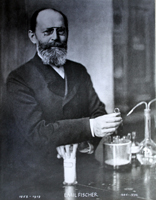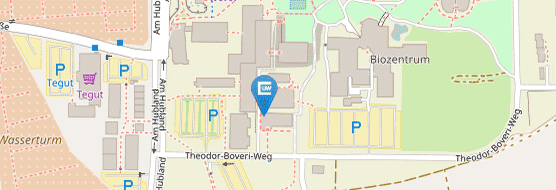Mission
The Mission of the Center for Nanosystems Chemistry
Approximately 100 years ago, the chemist Emil Fischer (Nobel Prize 1902) conducted his revolutionary research in the field of sugar chemistry at the University of Würzburg (1885-1892). One of his many proposals, the Lock and Key Model, became the basis for understanding supra- and biomolecular recognition processes. Today, understanding intermolecular self-association of molecules, similar to a chemical lock and key process, helps explain the development and function of living matter and allows for the rational design of functional materials.
To address challenges in the development of this chemistry beyond the molecule, in particular in the area of materials science, the CNC was established as a purely research focused supplementary unit of the Institute of Organic Chemistry in 2010 and equipped with modern instruments for materials analytics including a scanning electron microscope (SEM), an atomic force microscope (AFM), two X-ray diffraction instruments and instrumentation for the preparation and characterization of organic electronics devices. Next, in 2012 substantial funds were provided by the State of Bavaria for a 1255 m2 research building which was finished in 2016 and accommodates now expanded materials analytics sections and several junior research groups.
According to the CNC mission,
scientists at CNC in Würzburg study how specifically tailored molecules organize into larger supramolecular assemblies and further into hierarchically structured nanomaterials. The unique properties that emerge in such complex materials as a result of the interplay of single components are investigated from a fundamental point of view but also developed towards new applications.




